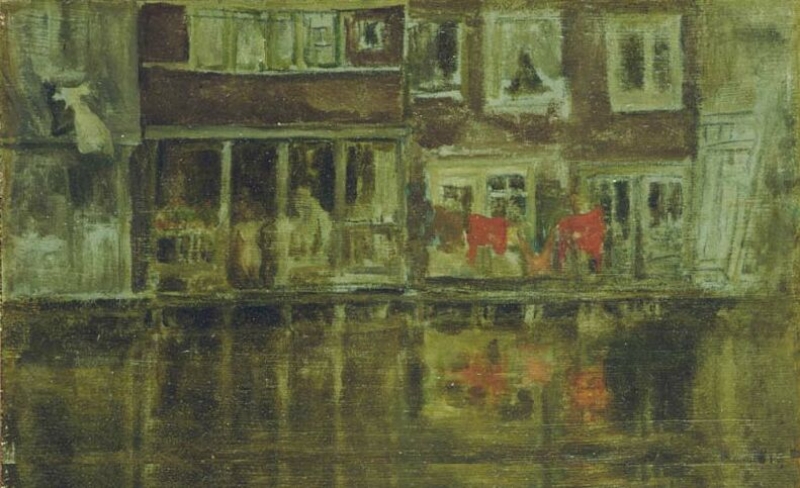Home > Catalogue > Browse > The Canal, Amsterdam << >>
Technique
It is on a thin softwood panel. The grain of the wood runs horizontally across the width of the panel. A thin mid-grey priming was applied with noticeable brush strokes parallel to the long edge. This priming was used as a mid-tone in some areas. The scene was sketched in detail with a grey crayon-like material (possibly conté crayon) on the panel. The line of washing on the right was twice drawn higher up. The reflections were painted freely, not drawn. 1
The thinned paint was applied thinly, with the exception of local spots of bright colour, mainly red. These spots were balanced across the composition, one bright turquoise one being overpainted in brown to reduce its impact. The rich red of the clothes illuminates the almost monochromatic grey-brown range of the rest of the panel.
The paint was rubbed to soften and blur reflections in the water, and scraped lightly over the housefront to convey the textures of the rickety wooden balconies. The brushwork is less fluid than in the panels of the earlier 1880s, but the simple design, subtle textures, and rich colour are very effective.
Conservation History
The panel has an auxiliary framing device of a mahogany-type backboard, and adhered 5-6 mm wide battens on all sides, with mitred corners. The battens are slightly misaligned on one side, and the batten at the lower edge is springing free of the panel. 2 Stuck on the verso of this support panel is a label giving the title and address of Rosalind Birnie Philip (1873-1958). This suggests that this form of auxiliary backing was done after Whistler's death, for exhibition in the 1905 memorial exhibition.
The panel is otherwise in good condition, as is the paint, except where it has been abraded by the frame. It may be that the varnish – in fact probably two layers of varnish – was added after Whistler's death, and it is now discoloured and slightly yellowed. 3
Frame
38.2 x 47.3 x 7.2 cm.
Last updated: 22nd October 2020 by Margaret






